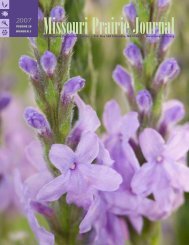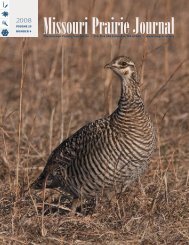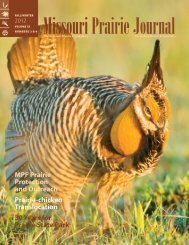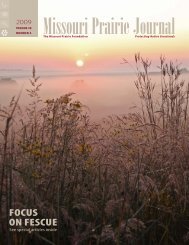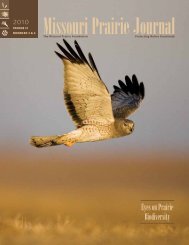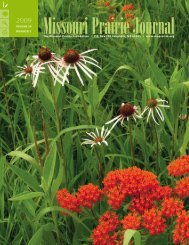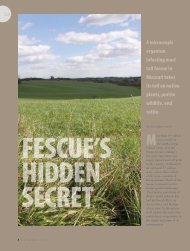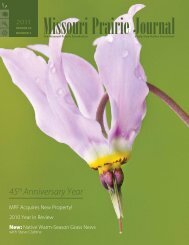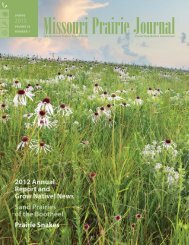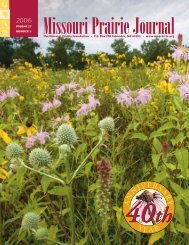Fall 2007: Volume 28, Number 4 - Missouri Prairie Foundation
Fall 2007: Volume 28, Number 4 - Missouri Prairie Foundation
Fall 2007: Volume 28, Number 4 - Missouri Prairie Foundation
Create successful ePaper yourself
Turn your PDF publications into a flip-book with our unique Google optimized e-Paper software.
gement Benefits QuailAs a wildlife biologist, I amoften confronted with thenotion that quail are “edge”species, not only by private landownersand armchair biologists, but also byprofessional conservationists. In his 1933book Game Management, Aldo Leopoldpostulated the Law of Interspersion and theedge-effect. The edge-effect asserts that thepresence of some wildlife species, includingnorthern bobwhite quail, is a phenomenonof edges and occurs where all habitatcomponents come together, i.e., where theedges meet. The more interspersed thosehabitat components become, the greaterthe amount of edge. This increase in edgetheoretically results in an increase in quailabundance.The landscape in which quail calledhome in the early half of the twentiethcentury, when the study of wildlife andtheir habitat associations began, was muchdifferent than today. During that time,most of the original prairies and savannashad been or were being converted tocropland. Forests and woodlands had beenor were cleared of trees. The landscape wasdotted with many small farms and smallfields. Tall fescue was not in North Americayet so pastureland was still dominatedby native grasses. Quail flourished underthese conditions, and early biologists likeLeopold noted that quail were typicallyfound along fence and hedgerows adjacentto agricultural crops and were thereforeclassified as an “edge” species. Thecategorization of quail as an edge speciescontinues today. But, does it really makesense to call quail an “edge” species?15





